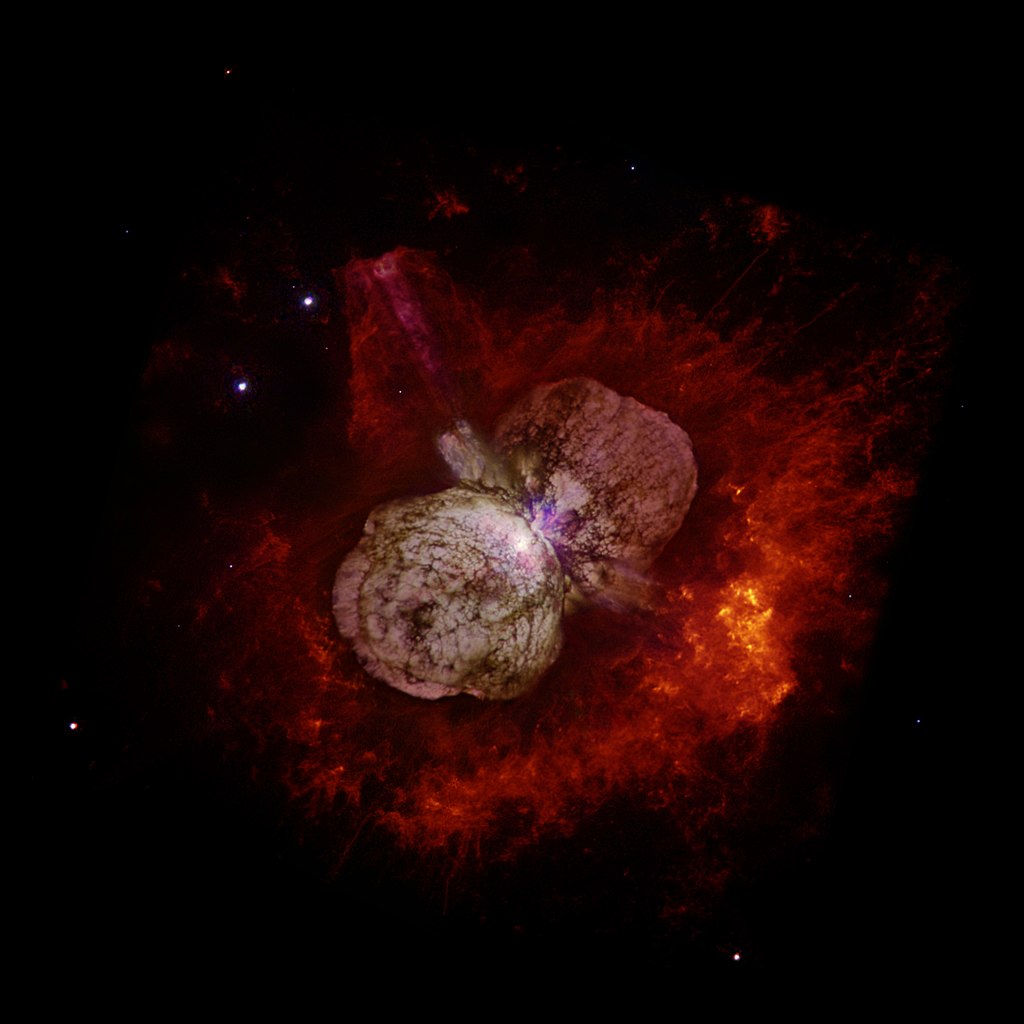The Homunculus is believed to have been ejected in an enormous outburst from Eta Carinae. Light from this event reached Earth in 1841, creating a brightening event in the night sky which was visible from the Earth's surface at the time.
The massive — near supernova — explosion produced two polar lobes, and a large but thin equatorial disk, all moving outward at 670 km/s (1,500,000 mph).
Though Eta Carinae is some 7,500 light-years away, its luminosity is so great that 'small' structures only 10 billion miles across — about the diameter of our solar system — can be distinguished. Dust lanes, tiny condensations, and strange radial streaks all appear with unprecedented clarity for such distant phenomena. The irregular, blob-like lobes of the outer ejecta are much fainter than the brilliant central star, by about 100,000 times. Excess violet light escapes along the equatorial plane between the bipolar lobes. Apparently there is relatively little dust-debris between the lobes, as most of the blue light is able to escape. On the other hand, the lobes contain large amounts of dust which preferentially absorb blue light, causing the lobes to appear reddish.

No comments:
Post a Comment